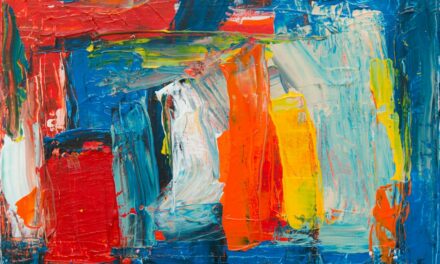The portrayal of skin tones in watercolor portraits is a nuanced and intricate process that requires a keen understanding of colour theory and the subtleties of human complexion. Skin is not a singular hue; rather, it is a complex interplay of various shades, undertones, and textures that can vary dramatically from one individual to another. Artists must first recognise that skin tones can be broadly categorised into warm, cool, and neutral undertones.
Warm skin tones often exhibit hints of yellow, peach, or golden hues, while cool tones may lean towards pink, blue, or violet shades. Neutral tones, on the other hand, are a balanced blend of both warm and cool undertones. To accurately capture the essence of a subject’s skin tone, artists should observe the interplay of light and shadow on the face.
Natural light can reveal the subtle variations in colour that exist within the skin, such as the rosy flush of the cheeks or the cooler tones around the eyes. By studying these variations closely, artists can develop a more profound understanding of how to mix their watercolours to achieve a lifelike representation. This understanding is crucial for creating portraits that resonate with authenticity and emotional depth.
Summary
- Understanding skin tones in watercolor portraits is essential for capturing the diversity of human complexion.
- Techniques such as layering and glazing can help achieve lifelike features in watercolor portraits.
- Choosing the right colors for different skin tones involves understanding undertones and mixing complementary hues.
- Creating depth and dimension in watercolor portraits can be achieved through careful shading and highlighting.
- Adding details and texture to enhance realism in watercolor portraits can be done using various techniques such as dry brushing and lifting.
Techniques for Achieving Lifelike Features in Watercolor Portraits
Building Depth with Glazing
One effective method is the use of glazing, which entails applying multiple transparent layers of paint to build depth and richness in colour. This technique allows artists to create subtle transitions between light and shadow, enhancing the three-dimensional quality of the face.
Layering for Realism
By layering colours gradually, artists can achieve a more realistic representation of skin texture and tone. Another essential technique is wet-on-wet painting, where wet paint is applied to a wet surface. This method can create soft edges and blends that mimic the natural flow of skin. It is particularly useful for rendering areas such as the cheeks or forehead, where a gentle gradient is often observed.
Adding Fine Details
Additionally, artists can employ dry brush techniques to add fine details and textures, such as the delicate lines around the eyes or the subtle variations in lip colour. Mastering these techniques will enable artists to create portraits that not only capture likeness but also convey the unique character of their subjects.
Choosing the Right Colors for Different Skin Tones
Selecting the appropriate colours for various skin tones is a critical aspect of creating realistic watercolor portraits. A common misconception is that skin tones can be achieved by simply mixing white with a base colour; however, this approach often results in flat and lifeless representations. Instead, artists should consider using a palette that includes a range of colours to reflect the complexity of human skin.
For instance, when painting warm skin tones, colours such as cadmium yellow, burnt sienna, and alizarin crimson can be mixed to create a vibrant yet natural appearance. For cooler skin tones, artists might incorporate hues like cerulean blue or violet to capture the subtle undertones present in the complexion. It is also essential to remember that shadows are not merely darker versions of skin tones; they often contain complementary colours that add depth and interest.
For example, shadows on warm skin may include hints of purple or blue, while shadows on cooler skin might incorporate warmer shades like ochre or sepia. By thoughtfully selecting colours and understanding their interactions, artists can create portraits that are rich in nuance and vitality.
Creating Depth and Dimension in Watercolor Portraits
Depth and dimension are vital components in achieving realism in watercolor portraits. One effective way to create this sense of volume is through the strategic use of light and shadow. Artists should pay close attention to where light falls on the face and how it interacts with different features.
For instance, areas such as the nose and cheekbones will catch light differently than the recesses around the eyes or under the chin. By using a combination of lighter washes for highlights and darker tones for shadows, artists can sculpt the face on paper, giving it a lifelike quality. Another technique for enhancing depth is to vary the intensity of colour across different areas of the portrait.
For example, areas that are closer to the viewer may be painted with more saturated colours, while those further away can be rendered with softer washes. This not only creates a sense of space but also draws attention to focal points within the portrait. Additionally, incorporating background elements that recede in colour intensity can further enhance the three-dimensional effect, allowing the subject to stand out prominently against their surroundings.
Adding Details and Texture to Enhance Realism
The addition of details and texture is what ultimately elevates a watercolor portrait from mere representation to a work of art that resonates with viewers. Fine details such as eyelashes, freckles, or the subtle texture of lips can significantly enhance realism when executed thoughtfully. Artists can achieve these effects through various techniques, including stippling or using a fine brush for precision work.
The key is to balance detail with softness; too much detail can detract from the overall fluidity characteristic of watercolour. Texture can also be introduced through layering techniques. By applying multiple washes and allowing them to dry between applications, artists can create a rich tapestry of colour that mimics the natural variations found in skin.
For instance, using a sponge or cloth to dab on paint can create an interesting texture that resembles pores or fine lines.
Tips for Capturing Facial Expressions in Watercolor Portraits
Observing Emotions
For instance, a smile may lift not only the corners of the mouth but also affect the eyes and cheeks. When painting expressions, it is essential to focus on key features such as the eyes and mouth, as these are often the most telling aspects of emotion. Artists can use variations in colour and shading around these areas to convey warmth or intensity.
Techniques for Capturing Emotion
Additionally, employing techniques like wet-on-dry painting can help define sharper edges where needed while maintaining softness elsewhere. By combining careful observation with skilled technique, artists can create portraits that resonate emotionally with viewers.
Creating Emotionally Resonant Portraits
Common Mistakes to Avoid in Watercolor Portraits of Skin Tones
While creating watercolor portraits can be immensely rewarding, there are several common pitfalls that artists should be mindful of to avoid compromising their work. One frequent mistake is neglecting to consider undertones when mixing colours for skin. Failing to account for these subtleties can result in portraits that appear flat or unnatural.
It is crucial for artists to experiment with different combinations and observe how colours interact on paper before committing to their final palette. Another common error is overworking areas of the portrait. Watercolour is inherently fluid; excessive layering or scrubbing at wet paint can lead to muddiness and loss of vibrancy.
Instead, artists should embrace the medium’s spontaneity by allowing washes to dry before adding further details or layers. This approach not only preserves clarity but also enhances the overall luminosity of the piece.
Exploring Different Styles and Approaches to Watercolor Portraiture
Watercolour portraiture offers an array of styles and approaches that artists can explore to find their unique voice within this medium.
For instance, some artists may choose to focus on loose brushwork and vibrant washes that evoke emotion rather than strict likenesses.
This approach allows for greater expression and creativity while still capturing the essence of the subject. Conversely, others may gravitate towards realism, meticulously rendering every detail with precision. This style demands patience and technical skill but can yield stunning results when executed well.
Regardless of style preference, it is essential for artists to remain open to experimentation and growth within their practice. By exploring various techniques and approaches, they can develop a distinctive style that reflects their artistic vision while continuing to hone their skills in capturing the beauty of human expression through watercolour portraiture.
If you are interested in exploring different art forms and techniques, you may also enjoy reading about collaborating with other street artists, crews, and collectives. This article discusses the benefits and challenges of working with other artists to create unique and impactful pieces of art. Check it out here for more insights into the world of collaborative art projects.


